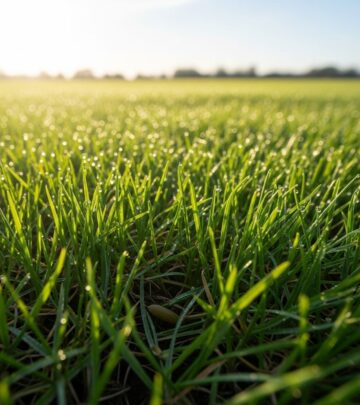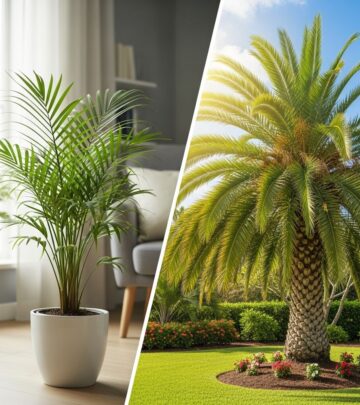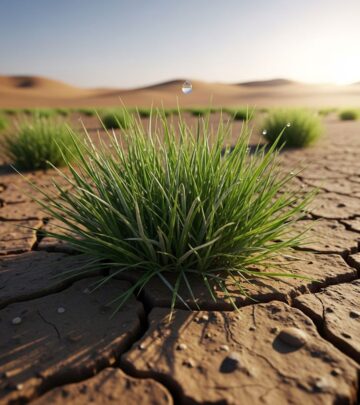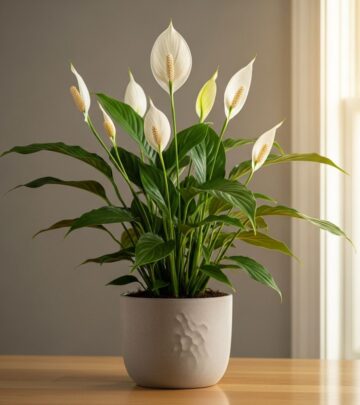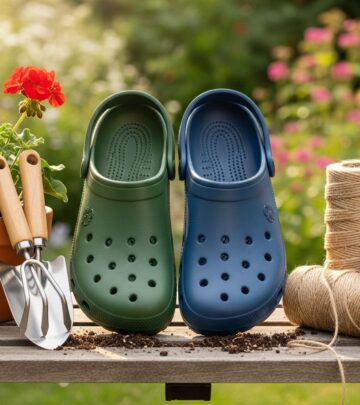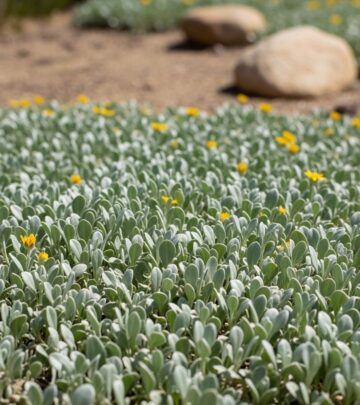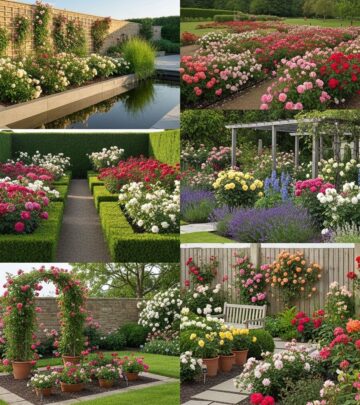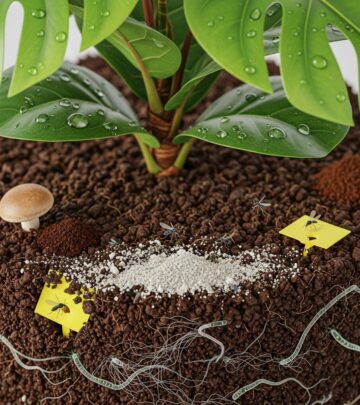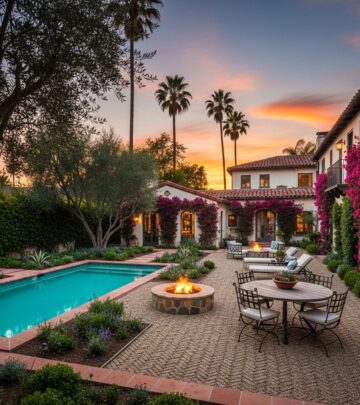Types Of Mulch For Garden: Comprehensive Guide
Discover the perfect mulch for your landscape with our comprehensive breakdown of organic and inorganic options
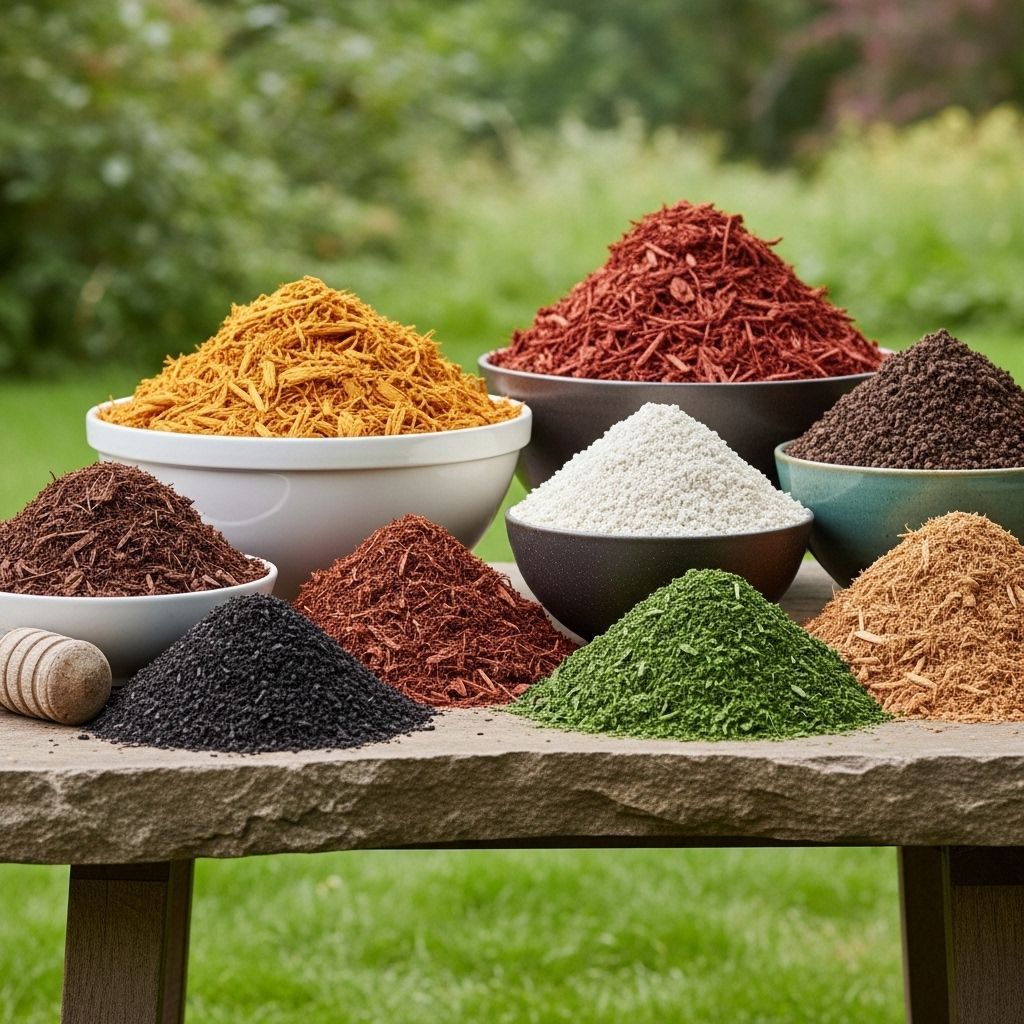
Image: HearthJunction Design Team
Understanding Mulch and Its Benefits
Mulch is a protective layer of material spread on the surface of soil that provides numerous benefits to your garden and landscape. Beyond its aesthetic appeal, mulch serves several crucial functions that contribute to plant health and garden maintenance. It helps retain soil moisture, suppress weed growth, regulate soil temperature, and prevent soil erosion. For organic varieties, mulch can also improve soil structure and fertility as it decomposes over time.
Selecting the right mulch for your garden depends on various factors including your climate, the types of plants you’re growing, your aesthetic preferences, and your maintenance capacity. This comprehensive guide will explore the diverse world of mulches, helping you make informed decisions for your landscape needs.
Types of Organic Mulch
Organic mulches are derived from once-living materials that break down over time, enriching your soil with valuable nutrients. These natural options are often preferred by gardeners looking to improve soil health while maintaining their landscape.
Wood Mulches
Wood-based mulches are among the most popular organic options, offering a natural appearance and excellent functionality.
Shredded or Chipped Wood
Shredded wood mulch provides a rustic, natural look with pieces ranging from small slivers to larger chunks. Typically costing between $30 to $110 per cubic yard, this eco-friendly option is made from leftover wood at sawmills or logging operations. It lasts approximately 1 to 3 years depending on weather conditions and application thickness. Shredded wood excels at retaining moisture, suppressing weeds, and gradually adding nutrients to the soil as it decomposes. However, it’s worth noting that it can attract termites if not properly maintained, and certain fungi may appear on the chips over time.
Wood Bark
Bark mulch, stripped from trees during lumber production, offers excellent moisture retention and weed control. Available in various textures from fine to chunky, bark mulch typically lasts longer than regular wood chips due to its higher lignin content, which resists decomposition. Common varieties include pine, cedar, and cypress, each bringing unique characteristics to your garden beds.
Wood Nuggets
Wood nuggets are larger, uniformly-sized pieces of wood that provide a tidier appearance than shredded varieties. They decompose more slowly than smaller wood chips, offering longer-lasting protection. Their size makes them less likely to blow away in windy conditions, making them suitable for exposed garden areas.
Plant-Based Mulches
Plant-based mulches offer excellent options for specific gardening needs and often utilize materials that might otherwise be considered waste.
Shredded Leaves
Shredded leaves make an excellent free mulch option if you have deciduous trees on your property. They decompose relatively quickly, adding valuable organic matter to the soil. For best results, shred the leaves first to prevent them from matting together and forming a water-repellent layer. Leaf mulch works particularly well in woodland gardens and around shrubs.
Leaf Mold
Leaf mold is essentially composted leaves that have broken down over time. This rich, dark material improves soil structure while providing excellent moisture retention. It’s particularly beneficial for woodland gardens and shade-loving plants that naturally grow in leaf-rich environments.
Pine Needles
Pine needle mulch, also called pine straw, is ideal for acid-loving plants and plants that prefer well-draining soil. It gently releases acid into the soil as it breaks down, making it perfect for plants like blueberries, rhododendrons, and azaleas. Pine needles are lightweight, easy to spread, and interlock to stay in place, even on slopes. They decompose more slowly than many other organic mulches, requiring less frequent replacement.
Grass Clippings
Grass clippings offer a readily available mulch option for vegetable gardens and annual flower beds. They decompose quickly, adding nitrogen to the soil. However, they should be applied in thin layers to prevent matting and rotting. Avoid using grass treated with herbicides, especially around sensitive vegetable plants.
Straw or Hay
Straw makes an excellent mulch for vegetable gardens, particularly for strawberries and other fruits that shouldn’t touch the soil directly. It provides good insulation in winter and helps keep fruits and vegetables clean. Straw breaks down relatively quickly, improving soil structure as it decomposes. Be aware that hay often contains seeds that can sprout in your garden, so true straw (the stalks left after grain harvesting) is preferable.
Specialty Organic Mulches
Several specialty organic mulches offer unique benefits for specific gardening situations.
Cocoa Bean Shells
Cocoa shell mulch provides an attractive, fine-textured appearance with a pleasant chocolate aroma when fresh. It’s lightweight and easy to spread, making it ideal for container gardens and small beds. As it breaks down, it adds organic matter to the soil. However, it can be hazardous to dogs if consumed, so use with caution if you have pets. It’s also relatively expensive compared to other organic options.
Hazelnut Shells
Hazelnut shells create an attractive, long-lasting mulch with excellent drainage properties. They don’t compact easily and provide a neat, uniform appearance. This mulch works well in ornamental beds and around shrubs, offering both functionality and visual appeal.
Compost
Compost, formed from organic materials such as kitchen scraps and yard waste, serves as both a soil amendment and mulch. It enriches the soil with nutrients and beneficial microorganisms while improving soil structure. Compost excels at moisture retention, minimizes watering requirements, and promotes environmentally friendly gardening practices. As a mulch, it breaks down quickly, requiring more frequent application but providing exceptional nutrition to plants.
Mushroom Compost
Mushroom compost, a byproduct of mushroom farming, offers several benefits as a garden mulch. While it doesn’t build the soil as much as other organic compounds, it does provide some nutrition and performs the other functions of mulch, such as retaining moisture and moderating soil temperature in both summer and winter. Gardeners should note that mushroom compost can be high in soluble salts, which may harm seedlings or salt-sensitive plants.
Coco Coir
Made from coconut husks, coco coir provides excellent water retention while still allowing good drainage. It’s a sustainable alternative to peat moss and works well in container gardens and raised beds. Coco coir is particularly useful in sandy soils that have trouble retaining moisture.
Types of Inorganic Mulch
Inorganic mulches are made from non-living materials and don’t decompose over time. They offer long-lasting benefits and are often chosen for their durability and low maintenance requirements.
Stone and Mineral Mulches
Stone mulches provide a permanent solution that can add significant visual interest to your landscape.
Gravel or Pebbles
Gravel mulch is low-maintenance and gives gardens a modern, clean appearance. Available in various sizes and colors, it provides excellent drainage and helps reduce soil erosion. Gravel excels in arid climates and works well with drought-tolerant plants. It complements flower beds, fire pits, and hardscape elements. However, it can increase soil temperature, potentially stressing plants in hot climates if not used carefully.
Volcanic Rock
Volcanic rock offers visual interest in a landscape while providing good drainage for plants that prefer dry conditions. It’s best used sparingly and in shaded locations to minimize the risk of overheating plants and soil. When applied over plastic, volcanic rock can potentially harm the soil microbiome and even damage shrubs and trees by overheating their roots.
Crushed Seashells
If you live near an ocean, crushed seashells can make a beautiful and functional mulch option, particularly in shaded areas where they’re less likely to overheat. They provide good drainage while slowly adding calcium to the soil as they break down. Be aware that in larger applications, the ocean scent of some seashell or oyster shell mulches may linger for some time.
Tumbled Glass
Available in clear and various colors, tumbled glass can make an attractive statement in a shaded garden. This recycled material won’t hold excessive moisture around plants that prefer dry, rocky soil. Glass mulch adds visual interest when combined with other materials, especially when used sparingly in strips and smaller decorative areas.
Manufactured Inorganic Mulches
Several manufactured products serve as effective mulches for specific gardening situations.
Landscape Fabric
Landscape fabric provides excellent weed suppression while allowing water and air to reach the soil. It’s often used under other mulches for enhanced weed control or in vegetable gardens. While not particularly attractive on its own, it serves as a functional base layer in many landscaping applications.
Rubber Mulch
Made from recycled tires, rubber mulch offers exceptional longevity and doesn’t decompose. It provides good cushioning for playground areas and excellent drainage properties. However, there are ongoing debates about potential chemical leaching from rubber mulch, so many gardeners avoid using it around edible plants.
Colored Mulch Options
Mulch colors can dramatically affect the appearance of your landscape, creating different visual effects and complementing various garden styles.
Brown Mulch
Brown mulch works with a wide range of plant colors and provides an excellent backdrop for green foliage. It blends naturally into the landscape and provides an organic look. Depending on the shade of brown, it can even mimic the appearance of rich, healthy soil, creating a cohesive look throughout your garden beds.
Black Mulch
Black mulch can replicate the natural look of some types of soil while providing dramatic contrast with light-colored blossoms and foliage. It works particularly well with contemporary or modern home designs, creating a sleek, sophisticated appearance. Be aware that black mulch absorbs more heat than other colors, which may be advantageous in cooler climates but potentially problematic in hot regions.
Red Mulch
Red mulch creates an eye-catching, unexpected feature in your landscape. It complements the green of your lawn and the foliage of bedding plants, shrubs, and trees. Red mulch also works exceptionally well against lighter-colored plants and buildings with neutral exteriors, adding a bold accent to the landscape design.
DIY Mulch Coloring
In addition to purchasing pre-colored mulch, gardeners can create custom mulch colors using do-it-yourself mulch dyes. This approach allows for personalized color schemes that perfectly match your landscape vision while potentially saving money compared to premium colored mulch products.
Choosing the Right Mulch for Your Garden
Selecting the appropriate mulch involves considering several factors related to your specific gardening situation.
Climate Considerations
Your local climate plays a significant role in mulch selection. In hot, dry regions, moisture-retaining mulches like wood chips may be preferable, while areas with high rainfall might benefit from mulches that provide good drainage, such as pine bark nuggets. In cold climates, mulches that provide insulation, like straw or leaves, can protect plant roots during winter.
Plant Needs
Different plants have varying preferences for soil pH, moisture levels, and nutrient requirements. Acid-loving plants benefit from pine needles or pine bark, while plants that need rich soil thrive with compost mulch. Desert plants and succulents often perform better with inorganic mulches that don’t hold excessive moisture against their stems.
Aesthetic Goals
Your landscape design and personal preferences should guide your mulch choice. For formal gardens, uniform materials like wood chips or small gravel create a polished look. Natural woodland gardens benefit from leaf mold or pine straw. Contemporary designs often incorporate sleek options like tumbled glass or black mulch for a modern appearance.
Maintenance Capacity
Consider how much time you want to spend maintaining your mulch. Organic mulches need replenishing as they decompose, while inorganic options require less frequent attention but may need occasional cleaning or raking to maintain their appearance.
Frequently Asked Questions About Mulch
Q: How thick should I apply mulch?
A: For most organic mulches, a layer of 2-4 inches is ideal. Apply too thinly, and you won’t get the full weed-suppression benefits; too thickly, and you may create drainage problems or provide habitat for pests. Inorganic mulches like gravel typically require a 1-2 inch layer for effectiveness.
Q: When is the best time to apply mulch?
A: Spring and fall are typically the best times to apply or refresh mulch. Spring application helps suppress summer weeds and retain moisture during hot months, while fall application provides winter protection for plant roots.
Q: Is it necessary to remove old mulch before adding new mulch?
A: It depends on the condition of the existing mulch. If it’s still in good condition but just thin, you can simply add more on top. If it’s decomposed significantly, it’s often beneficial to work it into the soil before adding a fresh layer. If the old mulch shows signs of disease or pest problems, removal is recommended.
Q: Can mulch attract pests?
A: Some organic mulches, particularly wood-based ones, can attract termites if placed directly against building foundations. To prevent problems, keep mulch at least 6 inches away from your home’s foundation. Avoid piling mulch too deeply, as excessive thickness can harbor rodents and other pests.
Q: Are colored mulches safe for plants?
A: Most commercially colored mulches use iron oxide (for red) or carbon (for black) based dyes that are considered safe for plants. However, it’s always wise to choose products specifically labeled as safe for garden use, as some cheaper dyes might contain harmful chemicals.
References
Read full bio of Shinta



